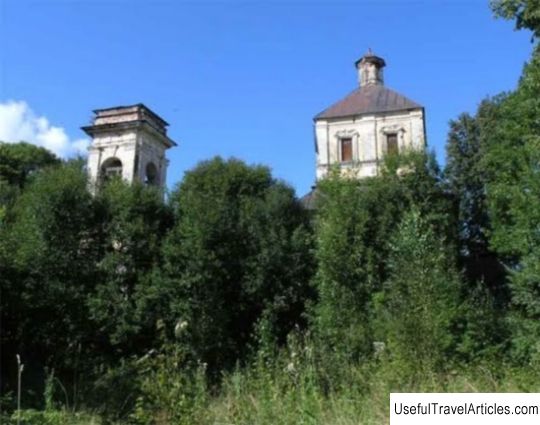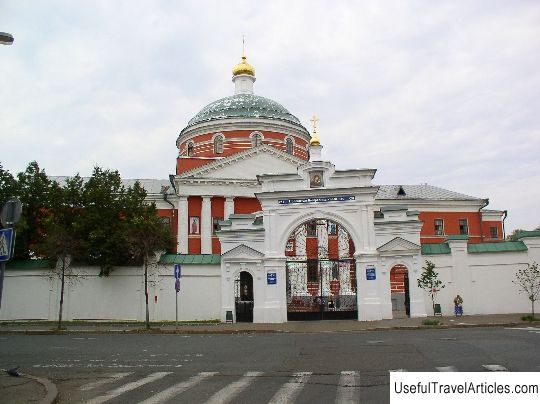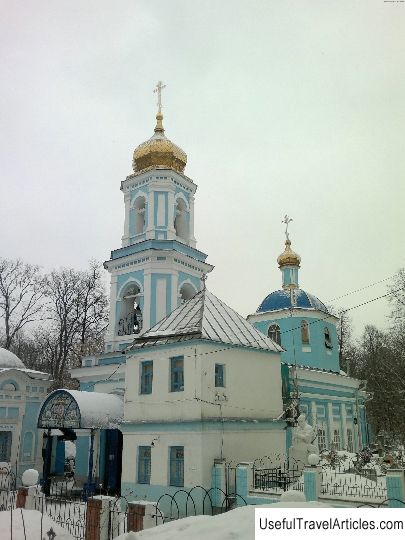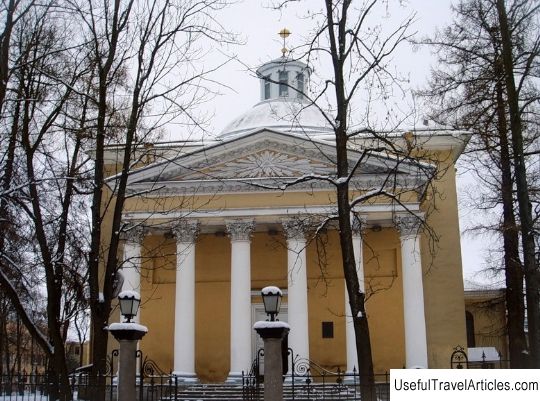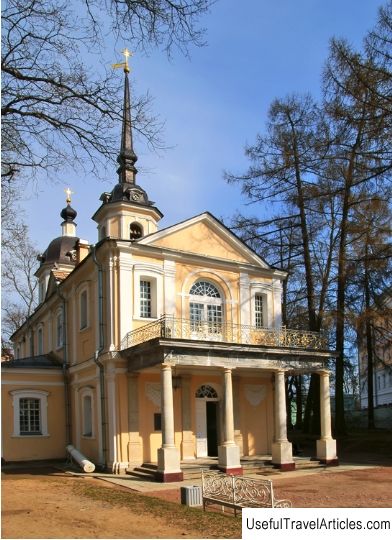Church of the Kazan Icon of the Mother of God description and photo - Russia - St. Petersburg: Pushkin (Tsarskoe Selo)
Rating: 8,4/10 (5904 votes) 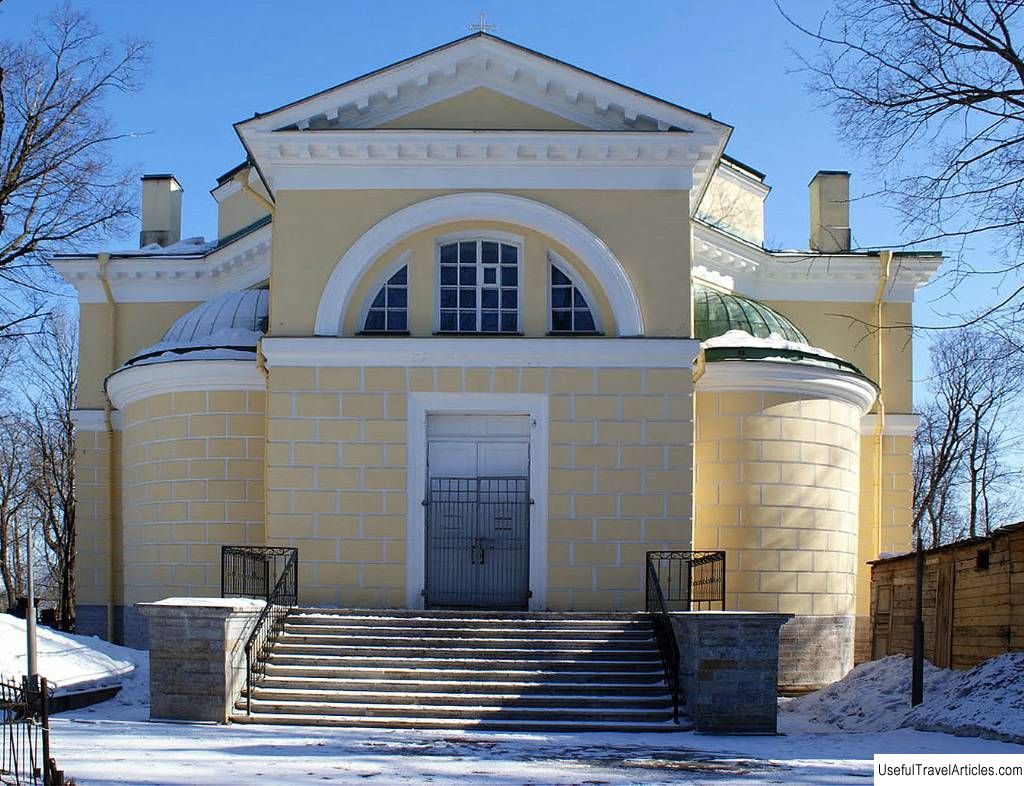
Church of the Kazan Icon of the Mother of God description and photos - Russia - St. Petersburg: Pushkin (Tsarskoe Selo). Detailed information about the attraction. Description, photos and a map showing the nearest significant objects. Photo and descriptionThe Temple of the Kazan Icon of the Mother of God is located in the city of Pushkin, at the Kazan cemetery. The church and the bell tower were built by the order of Empress Catherine the Great as the mausoleum of her favorite, Count A.D. Lansky. The temple was designed by the architect Giacomo Quarenghi. The laying took place in 1785. After 5 years, the church was consecrated. Opposite the church, on the western side of the fence, a two-story bell tower was built. Initially, the Kazan Church did not have its own clergyman, and it was assigned to various temples and military units. In 1860 the church got its own clergyman. Services were held here until 1924, and in 1930 it was closed. The iconostasis was dismantled and disposed of, the tombstones were transferred to the museum fund. The building was converted into a warehouse for seeds. During the Great Patriotic War, the tomb under the church was used as a bomb shelter. After the war, Pushkin's believers twice petitioned to open a church. But their requests were not heard. In 1967 it was planned to restore the temple, but it did not come true. In 1973, they wanted to demolish the church, but this did not happen. In 1995, the Kazan Church was included in the list of architectural monuments and returned to the Russian Orthodox Church. Work began to restore the temple. They are continuing now. Since 2010, services have resumed here. The Kazan Church has the shape of a square, its length and width are 19 m, the height to the cross is 23.11 m. The Romanesque baptistery (baptismal) in the Italian city of Lomello ) at the temple of Santa Maria Maggiore. The architect managed to reproduce the building plan exactly, the details he made in the style of classicism. The foundation of the church is made of gray granite, with external decoration in the height of a man. The walls are made of bricks. Outside, the temple and the bell tower were rusticated with oblong rectangles and painted with glue paint of a milky shade; the roof and eaves are made of iron. The interior of the church was very simple. The middle area of the temple is square, with a dome. The church had 4 semicircular niches, which were supported by powerful stone columns, one of which was an altar. The dome and vaults were decorated with three-tiered brick quadrangles. The dome is crowned with a wide cornice, which depicts the "All-Seeing Eye" on a blue background with gold stars. Within the walls of the temple there are recesses for tombstones with inscription boards. The floor was tiled in gray and red flagstone. Solea was enclosed by an iron grating with a bronze handrail. It is raised 20 cm. At first, a semicircular iconostasis was installed in the church, but in 1882 a new one appeared - a straight one. Its width was 8.5 m, the height in the center was the same, and on the sides - 7.1 m. The iconostasis was made of pine, gilded, with carved decor, with spiral columns and pilasters. Under church, in the basement in the form of a rotunda about 4 m high and an area of 113.8 square meters there were niches in two rows. Many famous people are buried here: Count A.D. Lanskoy, prince P.S. Meshchersky, Lieutenant General P.P. Ushakov and others. The bell tower of the Kazan temple was built 65 m to the west at the same time as the church itself. Initially, the living rooms of the deacon and the church watchman were arranged under it, and then - the office of the cemetery. After the war, there were cemetery workshops in the bell tower. In the late 90s of the XX century, the heavily damaged building was given to the local Naval Engineering Institute. In 1998, the restoration of the bell tower began according to archival documents. Now it is painted white and covered with blue metal tiles. In 1999, for the Day of the Navy, in the lower rooms of the chapel, Archpriest G. Zverev consecrated the chapel of St. Nicholas, where funeral services and funeral services are organized. The chapel was given the status of "marine". There are 2 anchors installed at the entrance, which are symbols of the Navy.  We also recommend reading The Powerhouse Museum description and photos - Australia: Sydney Topic: Church of the Kazan Icon of the Mother of God description and photo - Russia - St. Petersburg: Pushkin (Tsarskoe Selo). |
